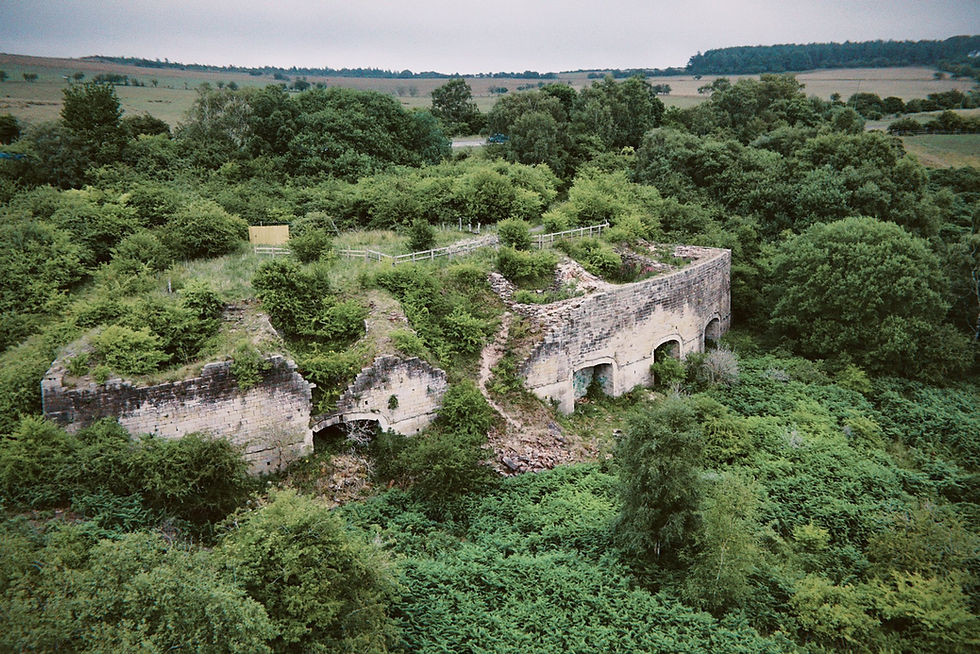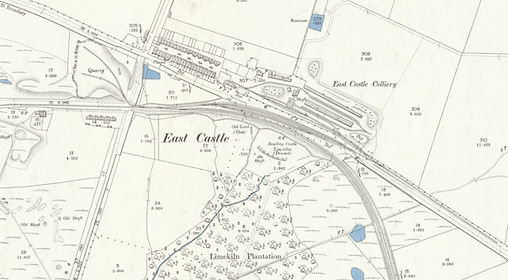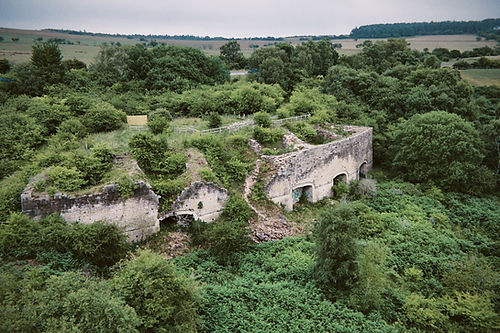
Leadgate
Bantling Castle Limekilns
Last Updated:
16 Aug 2025
Leadgate
This is a
Kilns, Lime Works
54.861411, -1.766514
Founded in
Current status is
Extant
Designer (if known):

In situ but at risk
One of the Stanhope & Tyne’s most important landmarks are the Bantling Castle limekilns. Somehow they’re not listed, and given their importance it is bewildering they haven’t been given protection.
This stone structure is almost 200 years old, and dates from the actual inception of the Stanhope & Tyne Railroad in the 1830s. This area was surrounded by pits and drifts, and they all fed these kilns coal to burn the limestone to produce quicklime as an additional site to the kilns at Crawleyside. Quicklime could then be used most notably as mortar and for metal working - an integral asset to the company to line brick shafts and build huge industrial complexes. It was (and still is) important in agriculture as a fertiliser too.
The Stanhope & Tyne went out of business after only a few years, which is partly why these kilns are in great condition. Use was uninterrupted for no more than 6 or 7 years, and even then the kilns were rotated. After disuse they were bought up by the Derwent Iron Company in 1842, with the product moved to Consett either by cart or loaded into wagons nearby.
They appear to have gone out of use by the 1850s, labelled as old on the Ordnance Survey maps of the same decade. Despite this, they remained stubbornly despite years of industrial processes growing and dismantling around it, most notably East Castle Colliery a few metres north.
Great care has been taking in recent decades to look after it, but its future is difficult to predict given there is no legal protection. This is especially the case given vandalism and small fires started in the tops.
Rob Langham is going great efforts to have them listed, so do like his page on Facebook to follow updates: https://www.facebook.com/RobsRailwayRamblings?mibextid=wwXIfr&rdid=UZuoOVhJxamITLPW&share_url=https%3A%2F%2Fwww.facebook.com%2Fshare%2F1EeciZXNWA%2F%3Fmibextid%3DwwXIfr#
Listing Description (if available)


The limekilns were only used for a few years, but have become a staple of the limescape and a monument to the Stanhope & Tyne. Even in its early life though, its immediately surroundings were constantly changing. The earlier map up top from the 1850s shows it out of use even by this point, with some of the pits and levels closed which served it. Bantling Castle Colliery is still operating west, though its associated brick works are not. There is also the Loud Pit east and a couple shafts dotted south west and north which will have come of use too. You may notice the actual Bantling Castle too - a manor house demolished in the early 20th century.
The 1890s map shows great development with the sinking of the East Castle Colliery. The Bantling Castle pit had closed many decades before but was retained for ventilation, and a village had opened up to serve the area. A quarry was also excavated, presumably providing the stone for the houses here. Another level can be seen immediately next to the kilns.

Only 50 years on from the last map, there is year again great change with the limekilns now standing solitary. East Castle had gone, with only a few railway cottages in situ. There was no Bantling Castle anymore, and in industrial just widescale earthworks and embankments. There was a single pit operating south though it was relatively minor scale.

The decaying limekilns in July 2025

A front facing view of the kilns in July 2025
